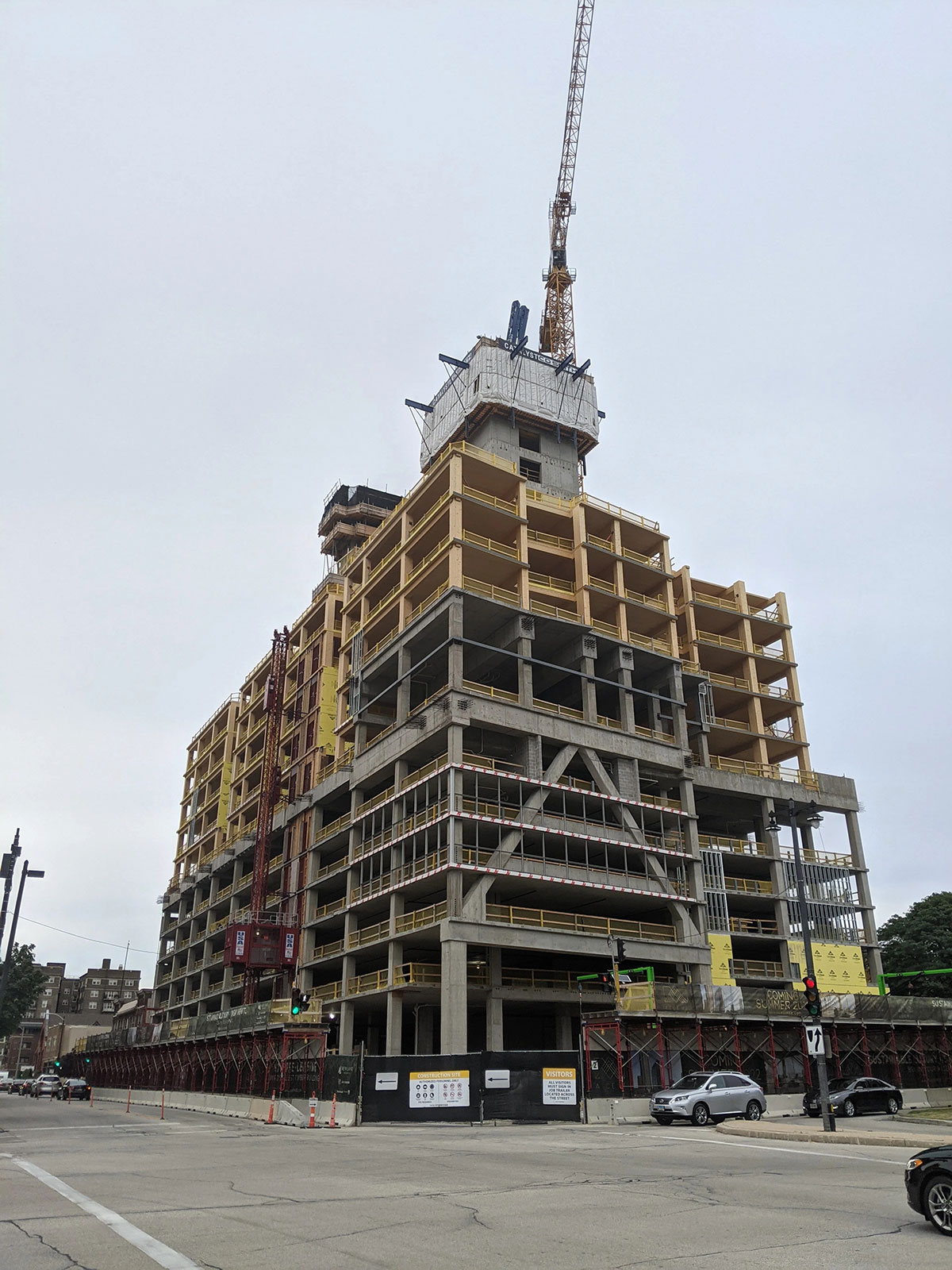Wood has been used as a building material for centuries. It is still a popular choice today because of its many advantages. Flexibility, strength and lightness, sustainability and renewability, thermal and acoustic insulation are just some of these advantages, which steel or concrete certainly do not have. For this reason, as for other factors, wood seems to be entering more and more architectural projects every day.
Indeed, solutions such as cross-laminated timber (CLT) offer numerous advantages. They reduce the construction time of buildings, which are in turn lighter, more durable and stronger. However, although it has all these advantages, wood also has limitations. For example, it requires proper treatment to prevent problems such as degradation caused by moisture or the threat of pests.

Image: https://www.skyscrapercity.com/threads/ascent-mke-25-fl-284-ft-2022-world-tallest-mass-timber-hybrid.2126350/page-16#post-174521871
Although it is commonly considered that wood is not suitable for high-rise buildings, technological developments, however, seem to disprove this. Buildings such as Mjøstårnet in Norway or the Ascent MKE Building in Wisconsin, USA, both almost 90 m high, offer evidence of the success of wood in high-rise structures.
By Jean Carlos Soto, Senior Structural Engineer in Amusement Logic’s Architectural Dept.






